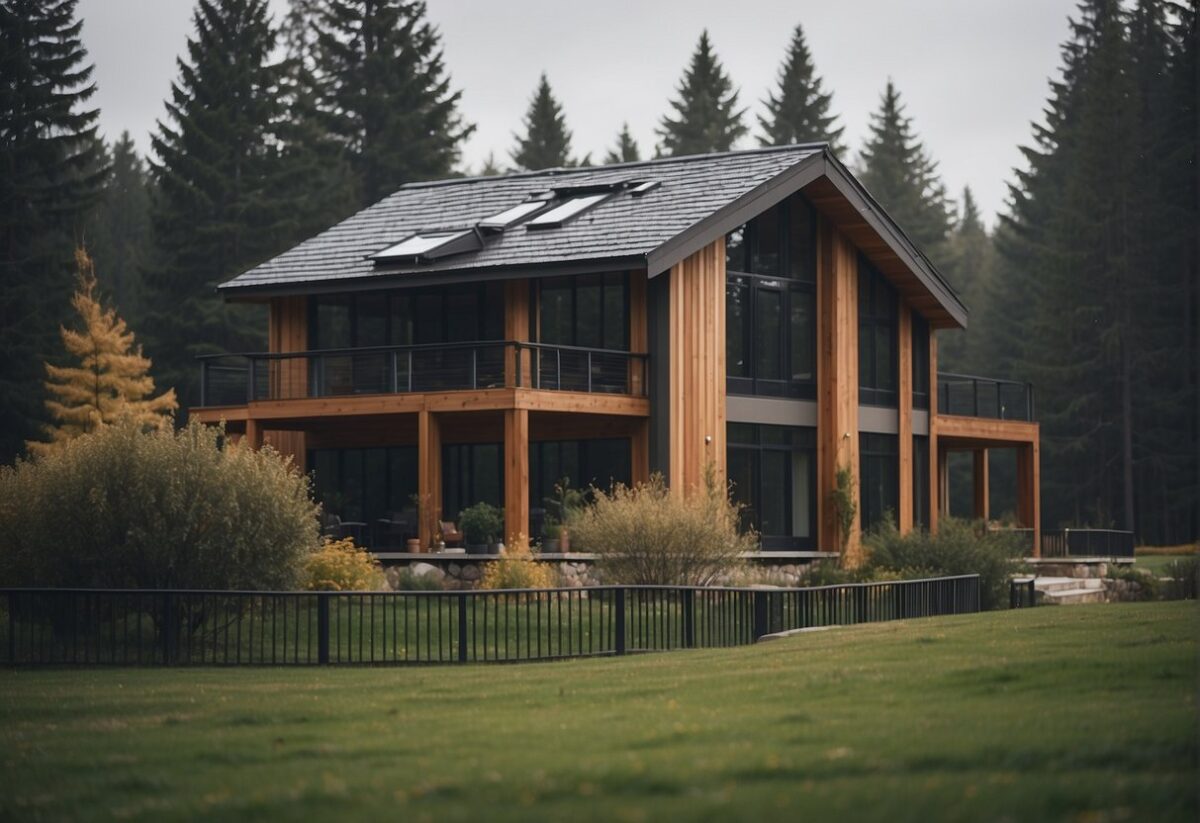In regions where extreme weather is a fact of life, it’s crucial to ensure that your home can fend off the forces of nature. From high winds to heavy rainfall, the elements can be relentless, and your home is the first line of defence in keeping you and your family safe. You might have experienced the stress of a storm or the worry that comes with flood warnings; however, there are steps you can take to reinforce your home (apart from using Lafarge materials!), making it a fortress against such challenges.
Installing robust defences like a sump pump can be an effective way to deal with potential flooding, especially if your home is in a known flood area or has a basement susceptible to water ingress. Understanding the strengths and weaknesses of your home’s structure is another key step. By assessing areas like roofing, siding, and insulation, you can identify where improvements can be made to ensure long-term durability and protection.
Knowing how to maintain your home’s structural integrity against the elements is as much about preparation as it is about the materials and techniques you choose. For instance, selecting the right house sidings not only adds to the aesthetic appeal of your home but also serves as a crucial barrier against environmental damage. Balancing the considerations of durability, cost, and aesthetics will arm you with the knowledge needed to make informed decisions that keep your home secure through the seasons.
Assessing Your Home’s Vulnerabilities
Before you can effectively protect your home from the elements, you need to understand its weak points. This insight will enable you to take the necessary precautions.
Conducting a Home Inspection
Start by examining your home’s exterior carefully. Look for signs of damage such as cracked walls, loose roof tiles, or worn sealing around windows and doors. Prioritise areas that directly combat the weather: roofs, gutters, and drainage systems. Consider enlisting a professional for a detailed home security assessment, as they can pinpoint issues you might overlook.
Next, inspect the interior for any evidence of water ingress, especially after heavy rain. Areas prone to leaks, like basements or attics, should be reviewed thoroughly.
Identifying Risk Factors
Understanding the local climate and weather patterns is crucial as this dictates the kinds of risks your home faces. If you live in an area that experiences frequent storms or flooding, check if your home rests on a floodplain or if the landscaping directs water away from the foundation.
Assessing your property’s structural integrity is also essential; older homes may need reinforcements to withstand severe conditions. Implementing protective measures like strengthening windows against high winds or securing loose items in your yard can drastically reduce the risk of damage during extreme weather events.
Strengthening the Building Envelope
The building envelope acts as a protective shell against weather and external elements. By reinforcing key components, you ensure your home remains warm, dry, and energy-efficient.
Reinforcing the Roof
Your roof is your home’s first line of defence against rain and snow. Regular inspections can catch potential issues before they turn into costly repairs. Choosing sturdy materials like high-grade metal or asphalt shingles will enhance durability. It’s crucial to check that all tiles or shingles are securely attached and that the flashing around chimneys and vents is intact to prevent water ingress.
Upgrading Windows and Doors
Windows and doors are critical to maintaining the integrity of your home. Double or triple-glazed windows greatly reduce heat loss and resist wind and rain. Make sure the seals are airtight and consider weatherproof frames made from uPVC or treated wood. Reinforced doors, especially at key entry points, add an extra layer of security and can be fitted with weather stripping to eliminate drafts.
Sealing and Insulation
Effective sealing and insulation are imperative for a cozy and energy-efficient home. Use caulk and weather-stripping to seal gaps in walls, windows, and doors. High-quality insulation in the walls, loft, and floors keeps heat in and cold out. Loft insulation should be at least 270mm thick, using materials like fibreglass or cellulose. It’s also worth insulating pipes and ductwork to prevent heat loss and freezing.
Protecting Against Water Damage
Protecting your home against water damage is essential for maintaining its integrity and comfort. Ensure you have a robust drainage system and consider waterproofing your basement to effectively shield your property.
Improving Drainage Systems
Your home’s first line of defence against water damage is an efficient drainage system. Ensure your gutters are clean and without blockages; this allows rainwater to flow freely away from your house. It’s worthwhile fitting gutter guards to prevent leaves and debris from causing obstructions. Additionally, ensure downspouts direct water at least 1.8 metres away from your foundation walls to avoid any potential water ingress.
Waterproofing Basements
Basements are particularly vulnerable to water damage, so waterproofing your basement is a critical step. Apply waterproofing sealants to the interior walls and floors to keep moisture out. If you’re in a flood-prone area, installing a sump pump can be an effective measure to remove accumulated water by actively pumping it away from your home. Moreover, check for and repair any foundation cracks that could allow water to seep in, to provide comprehensive protection against potential basement water damage.
Landscaping for Natural Defence
Landscaping can be a clever way to bolster your home’s defences against various natural elements. By selecting the right plants and features, you can protect your property while keeping it aesthetically pleasing.
Flood Prevention
- Grassed Waterways: Implement these to guide excess water away from your home.
- Rain Gardens: Create these to absorb runoff which reduces the risk of flooding.
Wind Mitigation
- Tree Lines: Plant trees in strategic locations to act as windbreakers.
- Shrubs: Place shrubs around your home to reduce wind speed at ground level.
Fire Resistance
- Fire-Resistant Plants: Opt for plants with high moisture content like aloe or agave to diminish fire spread.
- Defensible Space: Ensure there’s a gap between your home and vegetation to act as a firebreak, following advice from Defensive Landscaping: Using Plants For Protection.
Erosion Control
- Native Plants: They hold the soil well and prevent erosion.
- Terracing: This can be used on slopes to minimise soil wash-off.
When selecting plants, consider those with protective properties. For instance, choose prickly plants that can deter trespassers, or the Blackthorn with its dense thorny thickets. Above all, tailor your landscaping to your specific environmental challenges to ensure your home remains a safe haven.

